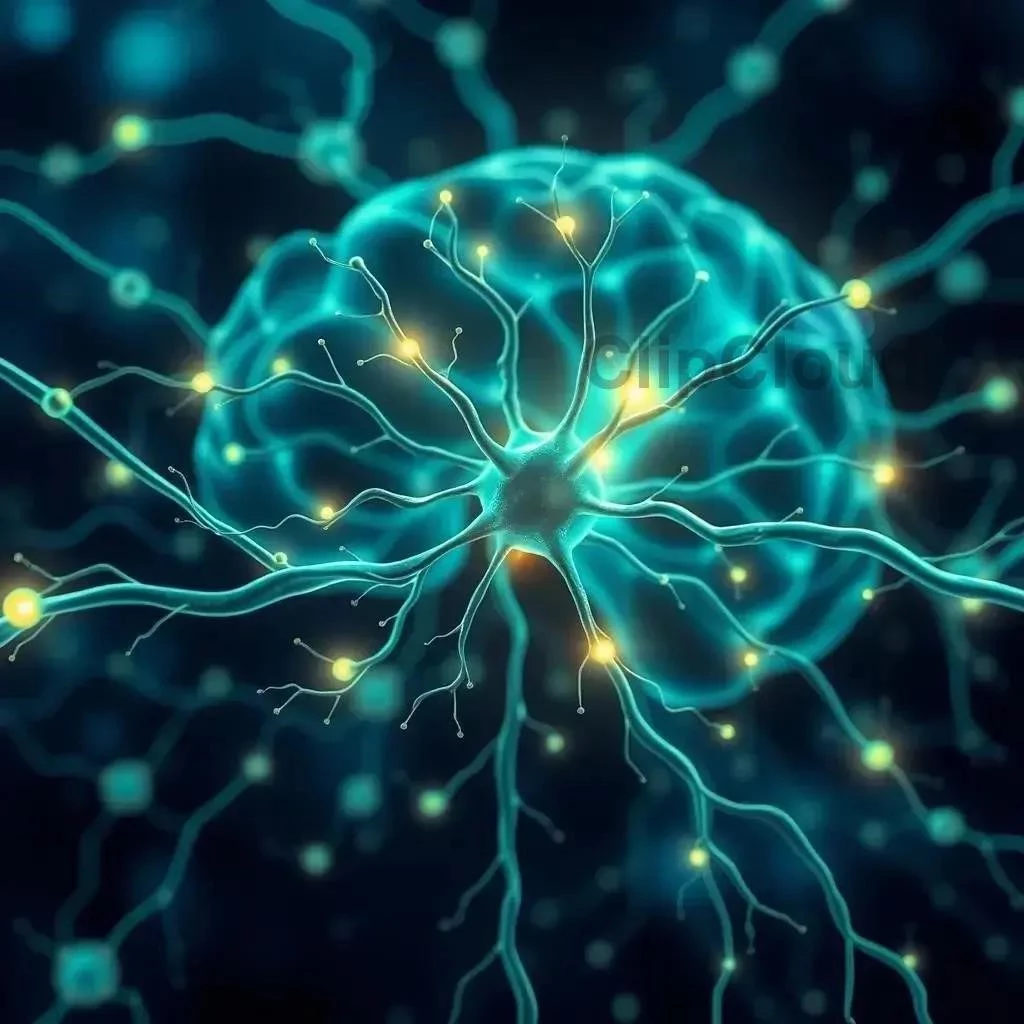The Brain’s Electrical Buzz: Exploring Neurofeedback and Brainwave Entrainment for Calm & Focus
Our brains hum with constant electrical activity, a symphony of brainwaves orchestrating our thoughts, emotions, and actions․ This intricate electrical dance influences our focus, our calm, and ultimately, our well-being․ This exploration delves into two cutting-edge techniques, neurofeedback and brainwave entrainment, that tap into this electrical landscape, offering potential pathways to enhance cognitive function and achieve a state of greater tranquility․ Discover how these methods work and their potential to unlock a calmer, more focused you․
Neurofeedback: A Mirror to the Mind
Neurofeedback, also known as EEG biofeedback, acts as a mirror reflecting the real-time activity of your brainwaves․ Imagine being able to see your thoughts and emotions translated into electrical patterns, offering a unique window into your inner world․ This technique utilizes electroencephalography (EEG) sensors placed on the scalp to detect and monitor the subtle electrical fluctuations generated by brain activity; These sensors translate the brain’s electrical signals into visual or auditory feedback, allowing you to observe your brainwave patterns in action․
The core principle of neurofeedback lies in operant conditioning, a learning process where behaviors are modified through reinforcement or punishment․ In this context, desirable brainwave patterns are reinforced, while undesirable patterns are discouraged․ For instance, if the goal is to enhance focus, the neurofeedback system might reward an increase in beta waves, associated with concentration, with a pleasant sound or visual cue․ Conversely, if the aim is to reduce anxiety, the system might provide feedback to discourage excessive theta waves, often linked to a more relaxed or drowsy state․
During a typical neurofeedback session, you’ll sit comfortably while the EEG sensors monitor your brainwave activity․ This information is then processed by specialized software, translating the complex electrical signals into a readily understandable format, such as a video game or a changing musical tone․ As you engage with the feedback, you learn, often subconsciously, to regulate your brainwave activity, moving towards the desired state․ For example, you might learn to control the speed of a car in a video game by increasing your beta waves or to calm a stormy sea by reducing theta waves․
The process is non-invasive and painless, essentially providing a gentle nudge to your brain to self-regulate․ Over time, through repeated sessions, these learned patterns can become more ingrained, leading to lasting changes in brain function․ Think of it as a form of mental fitness training, strengthening your brain’s ability to achieve and maintain desired states of calm and focus․ Neurofeedback offers a personalized approach, tailoring the training to your specific needs and goals, whether it’s improving attention span, managing stress, or enhancing overall cognitive performance․
Brainwave Entrainment: Riding the Rhythms of the Brain
Brainwave entrainment, also known as auditory or visual stimulation, offers a different approach to influencing brainwave activity․ Instead of providing feedback on existing brainwave patterns, it gently guides the brain towards a desired state through external rhythmic stimuli․ Imagine your brainwaves synchronizing with a calming rhythm, like a dancer gracefully following the beat of a drum․ This synchronization, known as the Frequency Following Response (FFR), is the foundation of brainwave entrainment․
The process typically involves listening to specifically designed audio tracks containing binaural beats or isochronic tones, or viewing pulsating lights․ Binaural beats are created by playing slightly different frequencies in each ear, producing a perceived beat at the difference between the two frequencies․ Isochronic tones, on the other hand, are regular pulses of sound at a single frequency․ Both methods, along with visual stimulation, can encourage the brain to resonate at the target frequency, influencing the dominant brainwave state․
Different brainwave frequencies are associated with various mental states․ For example, delta waves are prominent during deep sleep, theta waves during relaxation and meditation, alpha waves during a calm and focused state, beta waves during active thinking and problem-solving, and gamma waves during heightened perception and learning․ Brainwave entrainment aims to gently shift the brain towards the desired frequency range, promoting the corresponding mental state․
For instance, if you’re seeking relaxation and stress reduction, you might listen to an audio track with alpha wave frequencies․ The rhythmic pulses subtly guide your brainwaves towards the alpha range, encouraging a state of calm and tranquility․ Similarly, if you need to enhance focus and concentration, a track with beta frequencies might be more suitable․ The process is passive, requiring no conscious effort other than listening to the audio or viewing the visual stimuli․ Brainwave entrainment offers a convenient and accessible way to influence your mental state, potentially enhancing focus, promoting relaxation, and improving sleep quality․
It’s important to note that while brainwave entrainment offers a promising approach to modulating brainwave activity, individual responses can vary․ Factors such as individual brainwave patterns, sensitivity to stimuli, and the specific entrainment method used can influence the effectiveness of the technique․ As with any intervention aimed at influencing brain function, consulting with a healthcare professional is advisable, especially if you have any underlying health conditions․
Benefits of Neurofeedback and Brainwave Entrainment for Calm & Focus
Both neurofeedback and brainwave entrainment offer potential pathways to enhance calm and focus, though they achieve this through different mechanisms․ Neurofeedback trains the brain to self-regulate its activity, while brainwave entrainment uses external stimuli to guide brainwaves towards a desired state․ The potential benefits of both techniques span a range of cognitive and emotional domains․
Enhanced Focus and Attention: Neurofeedback can help individuals improve their ability to sustain attention and resist distractions by training the brain to increase activity in the beta frequency range, associated with focus and concentration․ Brainwave entrainment can similarly promote focus by using beta frequencies to stimulate brainwave activity in this range․ This can be particularly beneficial for individuals struggling with attention deficit disorders or those seeking to optimize cognitive performance․
Stress and Anxiety Reduction: Neurofeedback can assist in managing stress and anxiety by training the brain to reduce excessive activity in the theta or high beta frequency ranges, often associated with anxious states․ Brainwave entrainment can promote relaxation and reduce anxiety by using alpha frequencies to encourage a calmer brainwave state․ This can be a valuable tool for individuals experiencing chronic stress or anxiety disorders․
Improved Sleep Quality: Neurofeedback can help regulate sleep patterns by training the brain to increase activity in the delta frequency range, associated with deep sleep․ Brainwave entrainment can promote sleep onset and improve sleep quality by using delta frequencies to induce a state of relaxation conducive to sleep․ This can be particularly helpful for individuals experiencing insomnia or other sleep disturbances․
Increased Emotional Regulation: Both neurofeedback and brainwave entrainment can contribute to improved emotional regulation by influencing brainwave activity associated with emotional processing․ This can lead to greater emotional stability and resilience, enabling individuals to manage challenging emotions more effectively․
Enhanced Cognitive Performance: By optimizing brainwave activity, both techniques can contribute to improved cognitive performance, including memory, processing speed, and creativity․ This can be beneficial for students, professionals, and anyone seeking to enhance their cognitive abilities․
It’s important to remember that while both neurofeedback and brainwave entrainment offer promising benefits, they are not quick fixes․ Consistent practice and commitment are essential for achieving optimal results; Furthermore, individual responses can vary, and it’s advisable to consult with a qualified practitioner to determine the most suitable approach for your specific needs and goals․
Practical Applications and Future Directions
Neurofeedback and brainwave entrainment are finding increasing applications across diverse fields, offering promising potential for enhancing human well-being․ From clinical settings to personal development, these techniques are being explored for a variety of purposes․
Clinical Applications: Neurofeedback has shown promise in addressing conditions like ADHD, anxiety disorders, depression, PTSD, and insomnia․ By training individuals to regulate their brainwave activity, neurofeedback can complement traditional therapies and offer a non-pharmacological approach to managing these conditions․ Brainwave entrainment is also being explored as a complementary therapy for anxiety, stress, and sleep disorders․
Peak Performance Enhancement: Athletes, musicians, and professionals in demanding fields are increasingly turning to neurofeedback and brainwave entrainment to optimize their performance․ By enhancing focus, reducing anxiety, and improving mental clarity, these techniques can help individuals reach their full potential and achieve peak performance states․
Personal Development and Well-being: Beyond clinical applications, neurofeedback and brainwave entrainment can be valuable tools for personal growth and enhancing overall well-being․ Individuals seeking to improve their focus, manage stress, enhance creativity, or cultivate a greater sense of inner peace can benefit from these techniques․
Education and Learning: The potential of neurofeedback and brainwave entrainment to enhance learning and cognitive function is being actively explored in the field of education․ These techniques could offer personalized learning interventions, helping students improve their attention, memory, and overall academic performance․
Future Directions: The field of neurofeedback and brainwave entrainment is constantly evolving, with ongoing research exploring new applications and refining existing techniques․ Advancements in technology, such as portable EEG devices and sophisticated software, are making these interventions more accessible and user-friendly․ Future research may further elucidate the underlying mechanisms of these techniques and personalize their application for optimal effectiveness․ Integration with virtual reality and artificial intelligence holds immense potential for creating immersive and adaptive training experiences․
As our understanding of the brain’s electrical activity deepens, neurofeedback and brainwave entrainment are poised to play an increasingly significant role in enhancing human potential and promoting mental well-being․ These innovative approaches offer a glimpse into the future of brain-based interventions, empowering individuals to take control of their mental states and unlock their full cognitive and emotional capacity․






